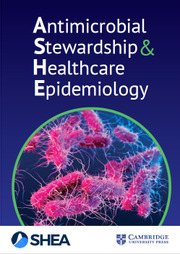No CrossRef data available.
Article contents
Evaluation of loop-mediated isothermal amplification (LAMP) assay for detection of five bacterial periprosthetic joint infection
Published online by Cambridge University Press: 03 September 2025
Abstract
Objectives: Periprosthetic joint infection (PJI) is one of the most serious and debilitating complications that can occur after total joint arthroplasty. Therefore, early diagnosis and appropriate treatment are important for a good prognosis. Recently, molecular diagnostic methods have been widely used to detect the causative microorganisms of PJI sensitively and rapidly. The Multiplex Loop- Mediated Isothermal Amplification (LAMP) method is faster and easier to perform compared to polymerase chain reaction (PCR)-based assays. Therefore, this study developed a multiplex LAMP assay for diagnosing bacterial PJI using LAMP technology and evaluated its analytical and clinical performance. Methods: We developed a multiplex LAMP assay for the detection of five bacteria: Staphylococcus aureus, Staphylococcus epidermidis, Streptococcus agalactiae, Pseudomonas aeruginosa, and Escherichia coli, frequently observed to be the causative agents of PJI. The method limit of detection (LOD) and cross-reactivity were determined by spiking standard strains into the joint synovial fluid. The LOD of the multiplex LAMP assay was compared with that of a quantitative real-time PCR (qPCR) assay. Clinical performance was evaluated using 20 joint synovial fluid samples collected from patients suspected of having bacterial PJI. Results: The LOD of the gram-positive bacterial multiplex LAMP assay and qPCR were 105/104 CFU/mL, 103/103 CFU/mL, and 105/104 CFU/mL against S. agalactiae, S. epidermidis, and S. aureus, respectively. For P. aeruginosa and E. coli, the LOD of the multiplex LAMP and qPCR assays were 105/104 and 106/104 CFU/mL, respectively. The multiplex LAMP assay detects target bacteria without cross-reacting with other bacteria, and exhibited 100% sensitivity and specificity in clinical performance evaluation. Conclusions: This multiplex LAMP assay can rapidly detect five high-prevalence bacterial species causing bacterial PJI, with excellent sensitivity and specificity, in less than 1 h, and it may be useful for the early diagnosis of PJI.
Keywords
Information
- Type
- Abstract
- Information
- Creative Commons
- This is an Open Access article, distributed under the terms of the Creative Commons Attribution licence (http://creativecommons.org/licenses/by/4.0/), which permits unrestricted re-use, distribution, and reproduction in any medium, provided the original work is properly cited.
- Copyright
- © The Author(s), 2025. Published by Cambridge University Press on behalf of The Society for Healthcare Epidemiology of America

